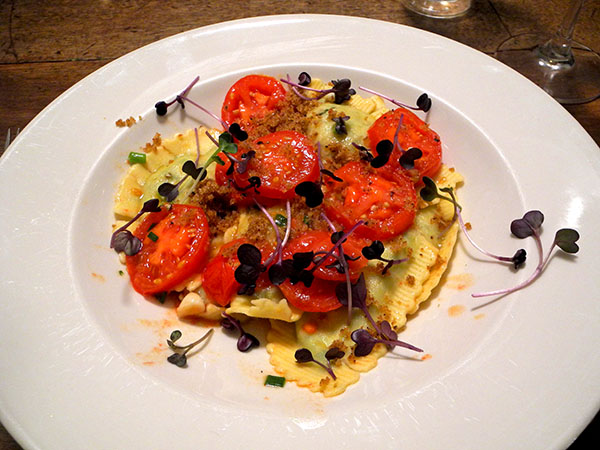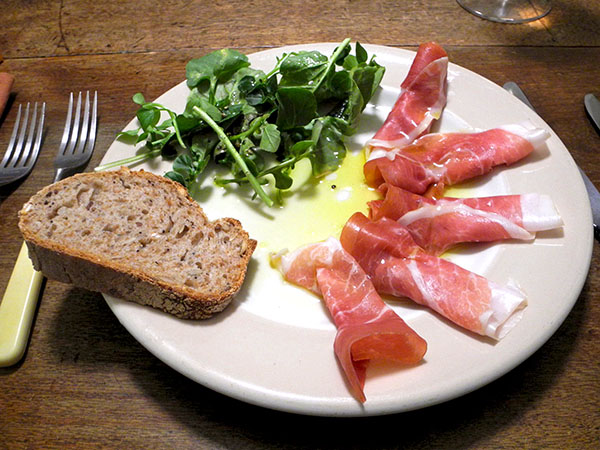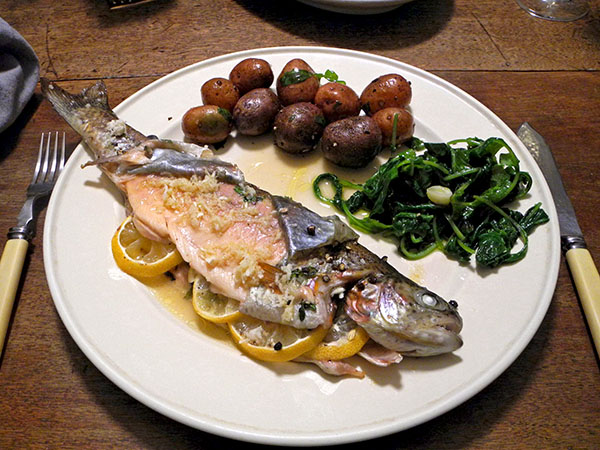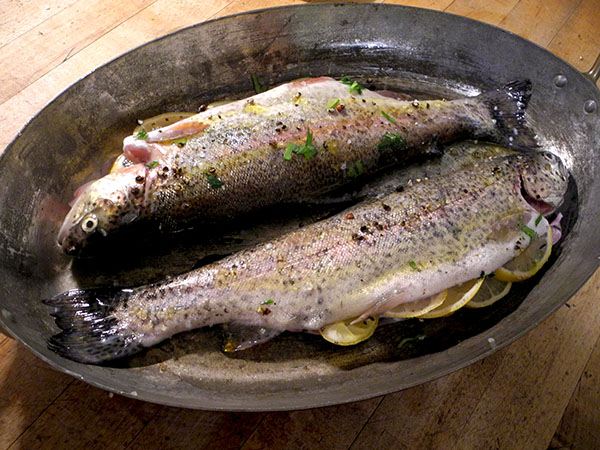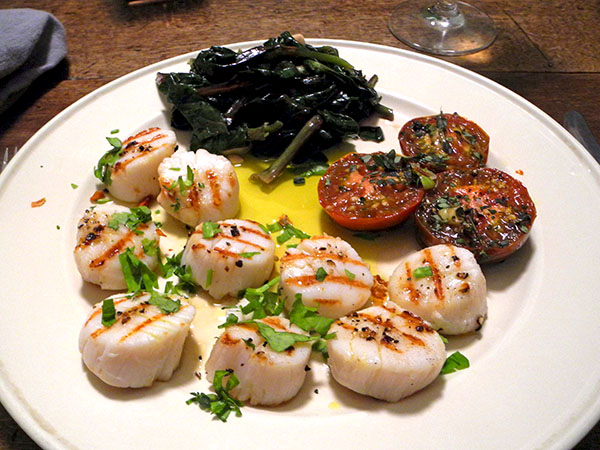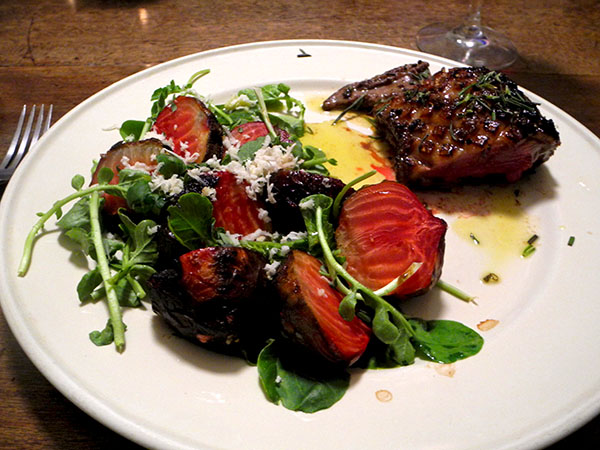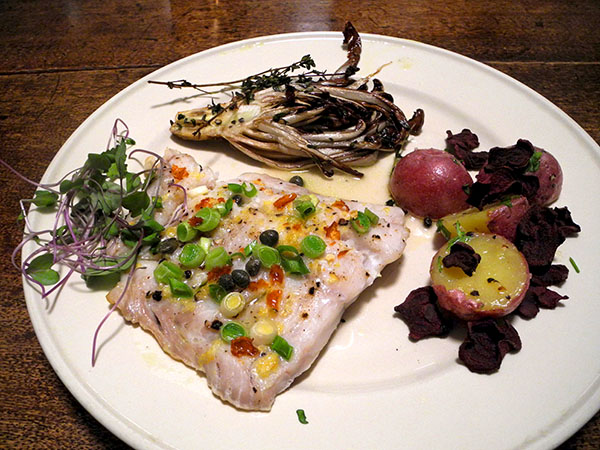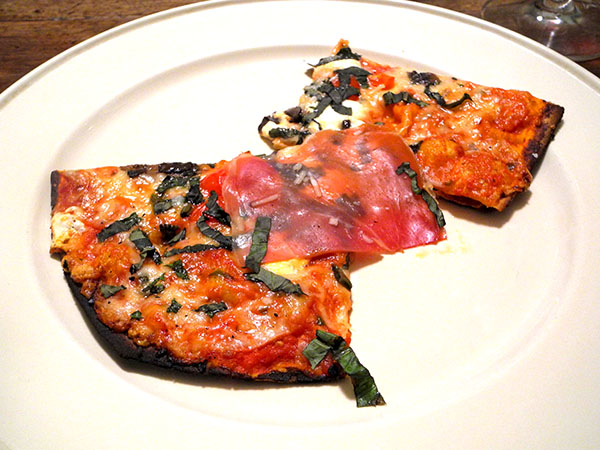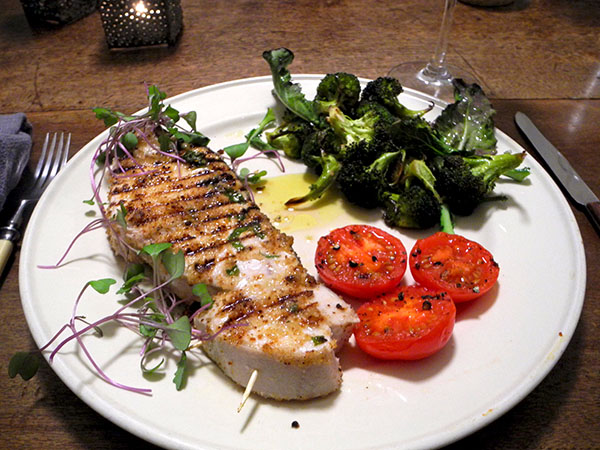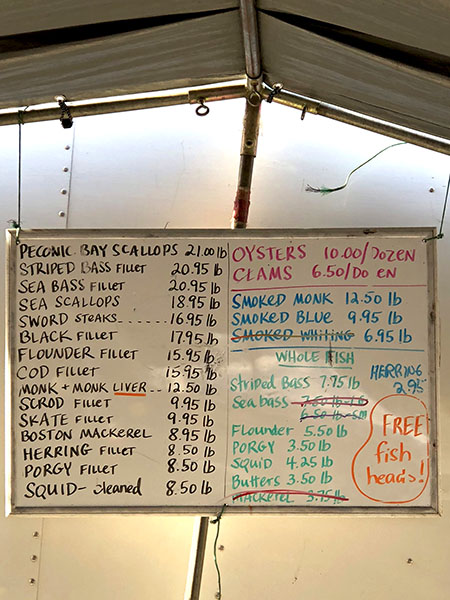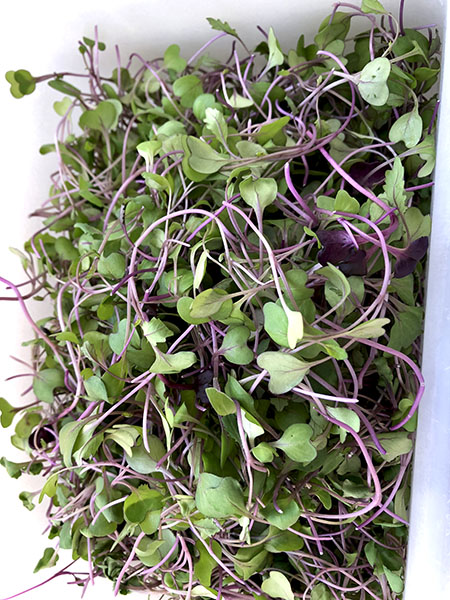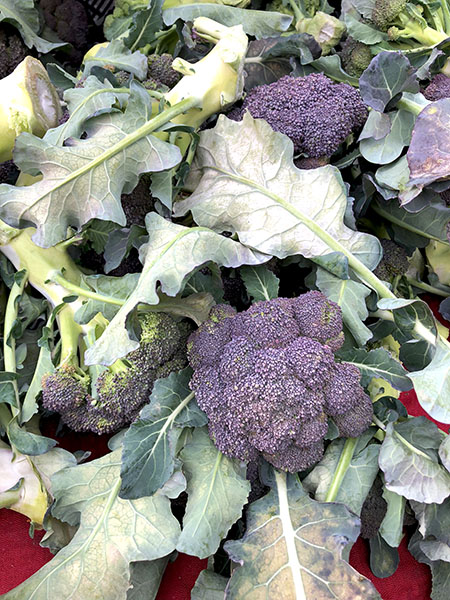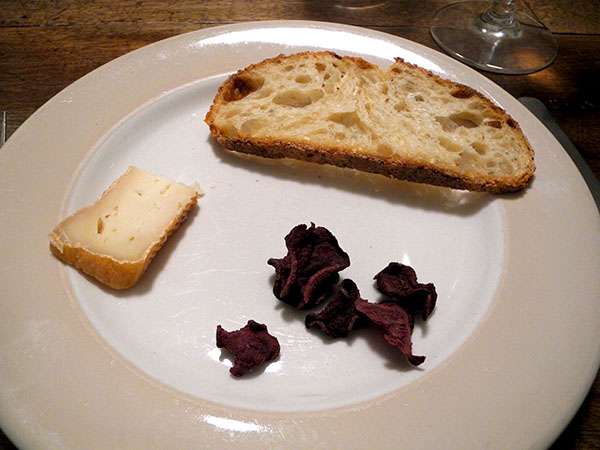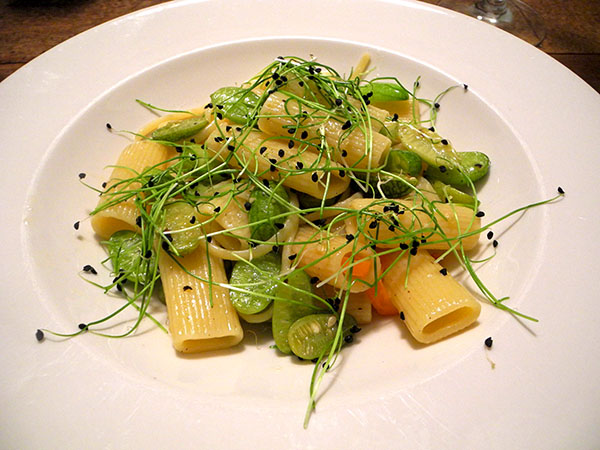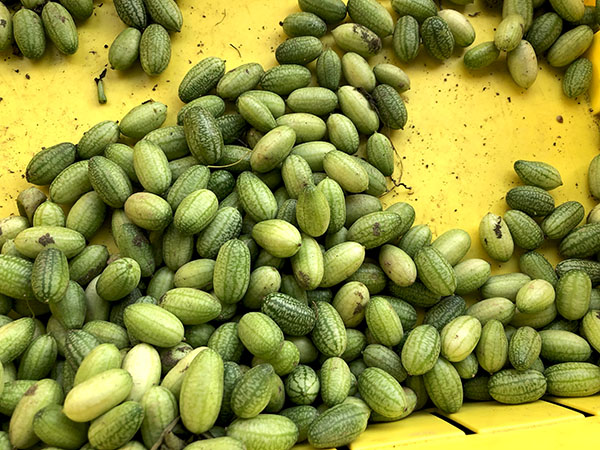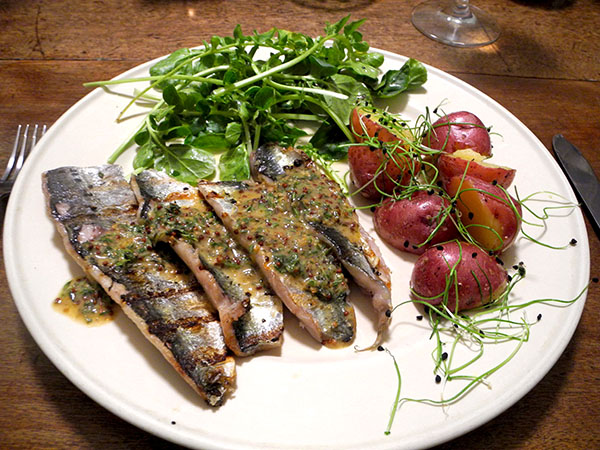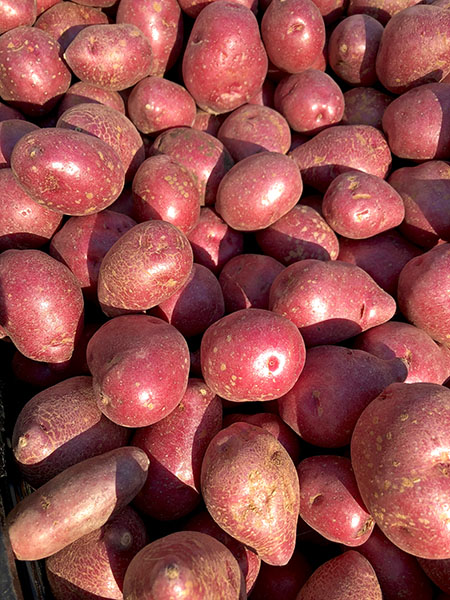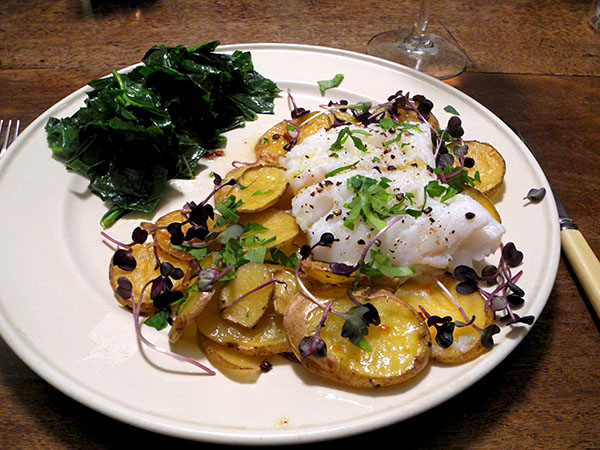
I’ve often put together meals similar to and almost identical to this one, but we never tire of this combination. In fact it’s one of our all-time favorites, and not at all difficult, even the first time out.
This time it was particularly good.
Dave’s potatoes (Max Creek Hatchery) were an important part, and Migliorelli’s December collards were so sweet.
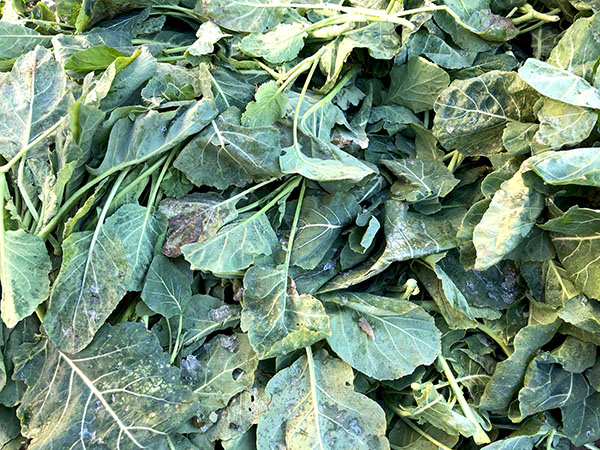
- * one 15-ounce cod fillet from Seatuck Fish Company in the Union Square greenmarket, halved, prepared more or less from a recipe from Mark Bittman which I had originally come across 12 years ago: the cod washed and rinsed, placed in a platter on a bed of coarse sea salt, with more salt added on top until the pieces were completely covered, then set aside while a bed of potatoes was prepared for them by slicing 12 ounces of German butterballs from Max Creek Hatchery to a thickness of less than 1/4 inch, tossing the potatoes in a large bowl with olive oil, salt, pepper, and a large pinch of orange/gold home-dried Habanada pepper [acquired in the fall of 2016 from Norwich Meadows Farm], arranging the potatoes, overlapping, in a rectangular enameled cast iron oven pan, cooking them for 25 minutes or so in a 400º oven, or until they were tender when pierced, then, before the potatoes had fully cooked, the cod was thoroughly immersed in many changes of water, to bring down the saltiness (incidentally, the soaking process somehow gives the fish more solidity, which can be easily felt while it’s being handled it at this point), draining and drying the two pieces before placing them inside the pan on top of the potatoes, drizzling them with a little olive oil and scattering some freshly-ground pepper on top, returning the pan to the oven for 8 to 12 minutes (the exact time depends on the thickness of their), removing the fish with a spatula (or, much better, two spatulas), along with as much of the potatoes as can be brought with each piece, and arranging everything, intact if possible, onto 2 plates, returning to the pan for the remainder of the potatoes, the servings each scattered with chopped parsley from Norwich Meadows Farm and garnished with purple micro radish from Two Guys from Woodbridge
- * one good-size bunch of collard greens from Migliorelli Farm, stripped of their stems, torn into small sections, washed several times and drained, transferred to a smaller bowl very quickly, in order to retain as much of the water clinging to them as possible, then braised until barely softened inside a heavy enameled cast iron pot in which 2 Rocambole garlic cloves from Keith’s Farm had first been allowed to sweat in some olive oil, finished with sea salt, freshly-ground black pepper, a little crushed dried Sicilian pepperoncino from Buon Italia, and a drizzle of olive oil
- the wine was a California (Lodi) white, David Akiyoshi Chardonnay Lodi 2016, from Naked Wines
- the music was Bohuslav Martinü’s Symphony No. 2 (Cornelius Meister conducting the Vienna Radio Symphony Orchestra in a fantastic performance), composed during World War II (1943), on a commission from the Czech community in Cleveland. It was premiered by the Cleveland Orchestra conducted by Erich Leinsdorf on October 28 that year, which marked the 25th anniversary of the foundation of Czechoslovakia, then downgraded to a Czech protectorate and Slovak puppet state under German occupation.
